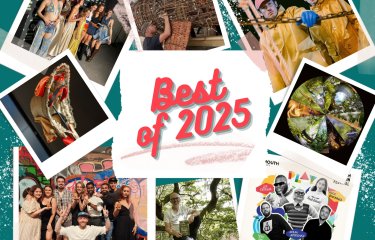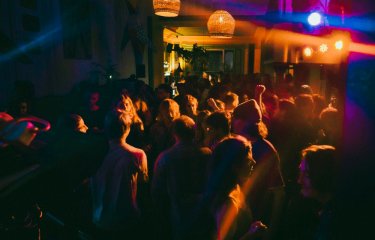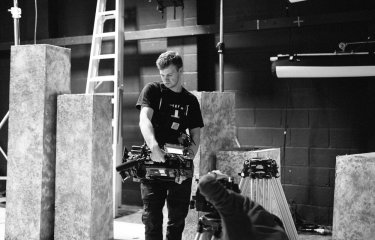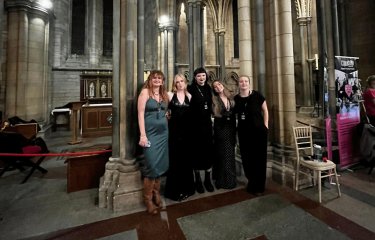Architecture Students Design Sustainable Bio Houses
04 June 2019
Designing a house is one thing, designing a completely new sustainable community for the future is another. That’s what our second year BA(Hons) Architecture students have been working on recently, as part of a live brief for a local site and community in Falmouth.
Creating prototypes for semi-urban and urban houses, the project looks at the future of housing needs and the potential for sustainable co-existence between the land, humans and animals. Designs include Mycelium grown farmhouses and silk worm woven houses.
Stephen Davies, second year BA(Hons) Architecture student, is part of the group that has designed a farmhouse built with Mycelium, the vegetative root structure of fungi.
Stephen explained: “We designed farmhouses for a community growing both shared and personal crops. The site was on the outskirts of Falmouth, as it was put in the brief, ‘where urban meets rural’. The intention was to get the community as close to self-sustainable as the conditions would allow.”
The group conducted research on the project before meeting up to share their ideas and work on a masterplan, designing the dwellings around what they agreed were the community’s wants and needs.
Stephen told us: “I liaised with representatives from Transition Falmouth – the local brand of the international Transition Network – intent on implementing the appropriate infrastructure for a sustainable future. They revealed local initiatives to us, such as the ‘co-cars’ scheme – a pre-order car sharing service – located less than a mile from our site.”
“With that knowledge,” Stephen continued, “we could envisage our residents getting by without owning cars, so in turn the farmhouses aren’t designed with parking spaces.”
Their design – that uses Mycelium bricks – is certainly ahead of the curve in terms of general building, but it does follow an increasing use of Mycelium as a natural alternative to plastic.
Stephen explained: “Dell and Ikea use it in their packaging and in California, a company is producing Mycelium surfboards! Most pertinently for our project, it can be used as a building material. It’s already been introduced as a form of insulation and a number of experimental buildings have been constructed, to test its structural integrity.”
Learning about Mycelium and its uses was the highlight of the project for Stephen.
“My farmhouse was designed to grow mushrooms, initially as a food source. Eventually, I found Mycelium far more interesting and potentially far more valuable to the community than farming mushrooms for food would be. I decided instead to focus on farming Mycelium and experimenting with its potential uses.”
Stephen explained: “Mycelium ‘grows’ to form whatever you put it in; another farmhouse design featured a 3D printer, using recycled plastic. Working in tandem with that facility, Mycelium could end the community’s reliance on products pre-fabricated off site, further reducing their negative environmental impact.”
When asked why this project was so important, Stephen said: “When we’re trying to be ‘environmentally friendly’ we don’t always think beyond the immediate, material decisions. We might decide we don’t need a plastic bag in the supermarket but a more significant question is whether we need international supermarkets with global distribution networks.”
“I enjoyed this project,” Stephen said, “because we were developing a local infrastructure. We were designing to minimise the community’s interaction with global industries. If we want to better the environment ecologically, I think it’s necessary to reconsider our relationship with the economy.”




